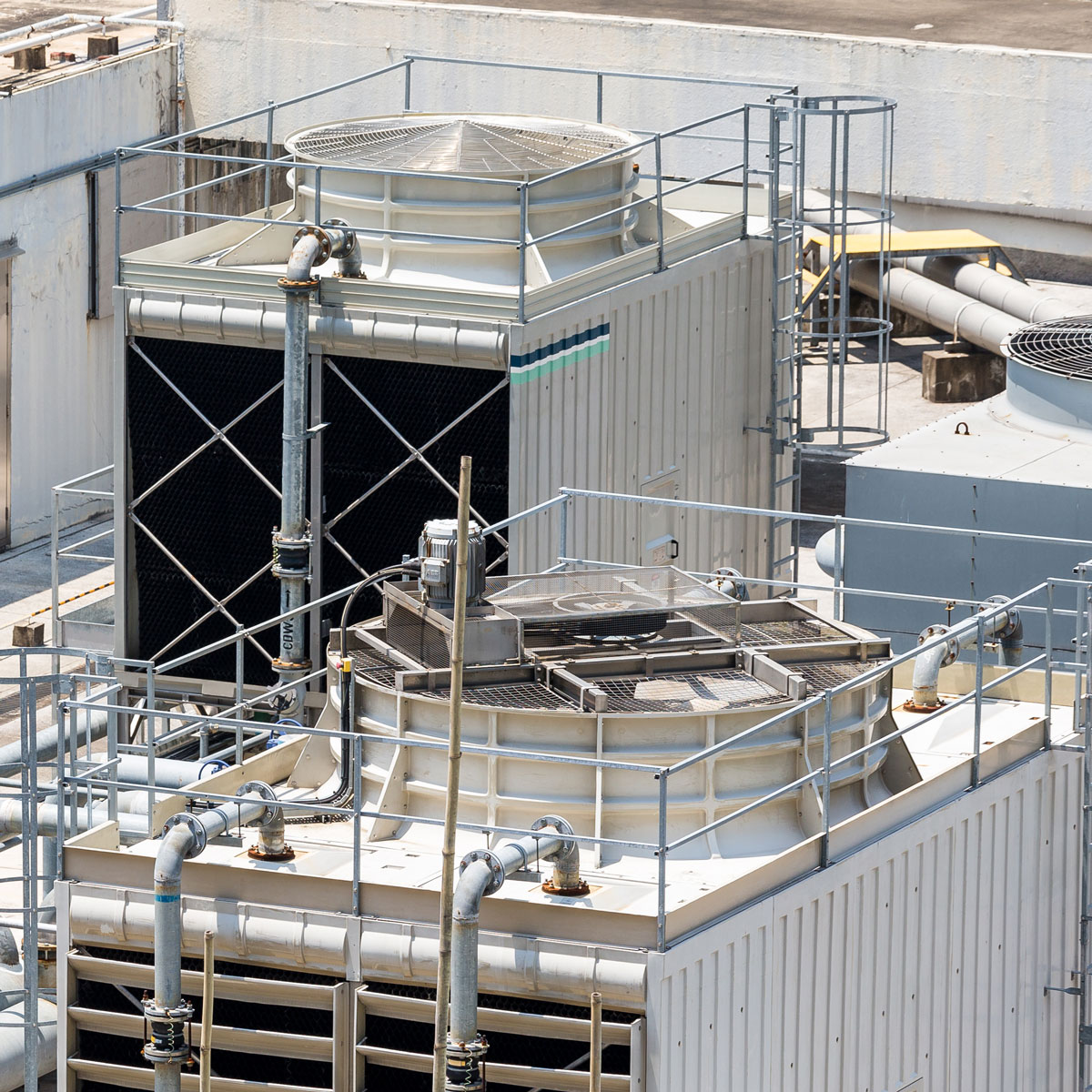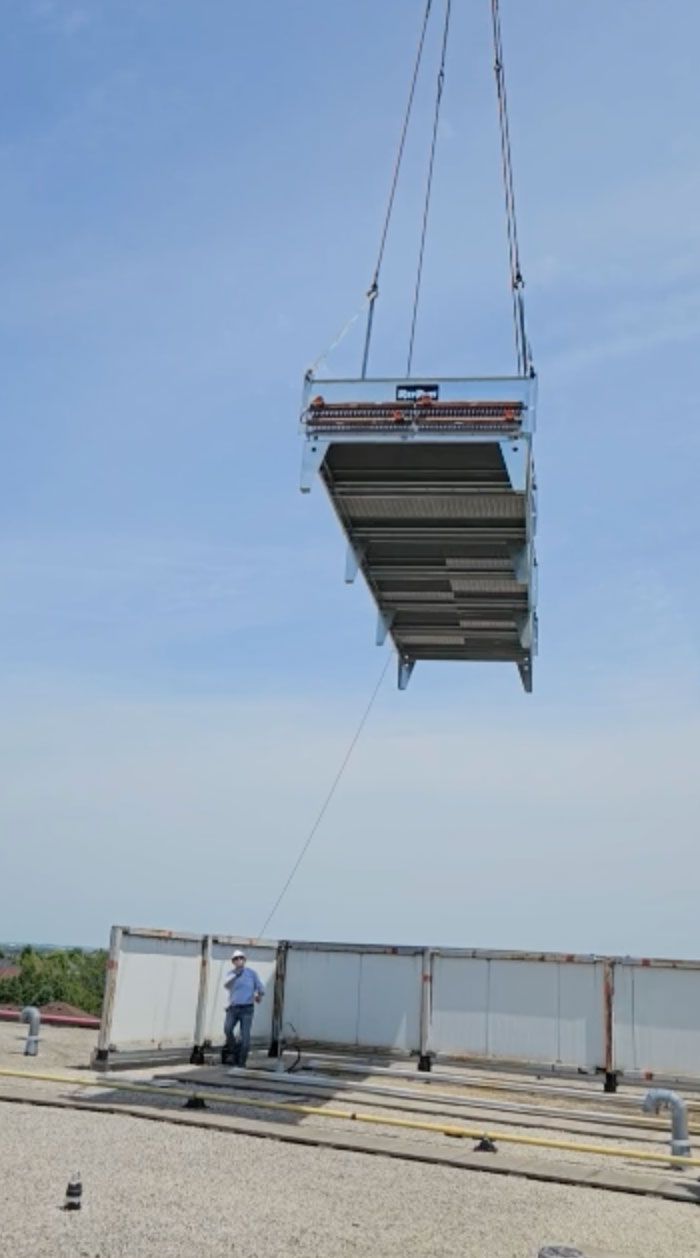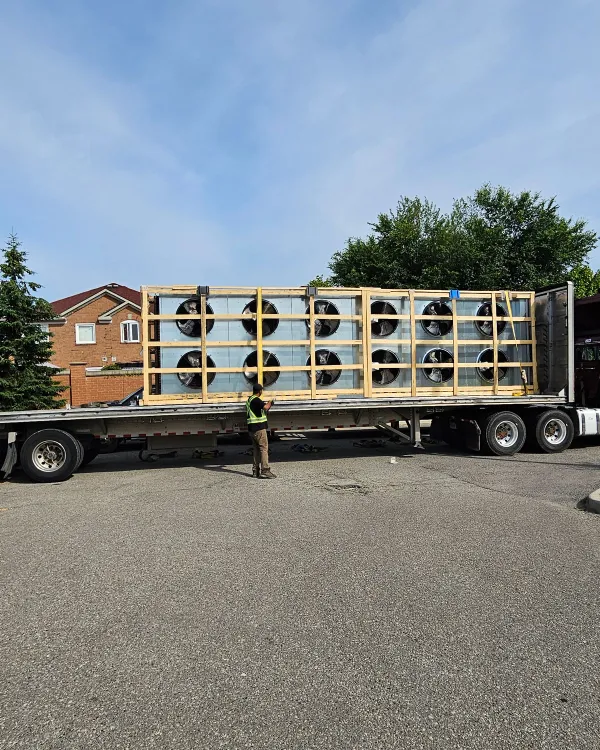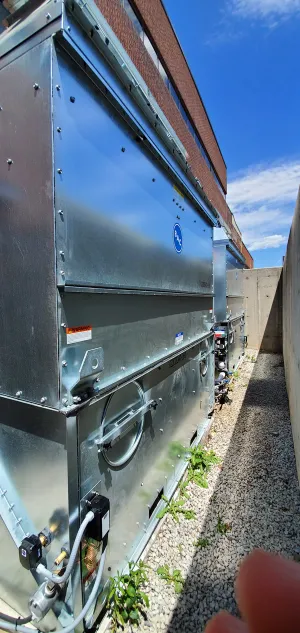Cooling Towers
At A Plus Quality, we specialize in providing high-performance cooling tower solutions for commercial buildings and industrial facilities across Southern Ontario. Whether you need a new cooling tower installation, a system upgrade, or expert preventive maintenance, our skilled team ensures your equipment operates at peak efficiency and reliability, meeting all safety and environmental compliance standards.
Our Cooling Tower Services Include:
- Custom cooling tower installations tailored to your needs
- Upgrades for existing systems to enhance efficiency and performance
- Routine inspections and maintenance to prevent costly repairs
- System optimization for improved energy savings and reduced downtime
- Compliance with regulatory standards (ASHRAE, LEED, etc.)
Serving areas from Hamilton to Oshawa and up to Barrie, we offer solutions for all types of cooling towers, including evaporative and non-evaporative systems, ensuring optimal performance year-round.
Why Cooling Tower Maintenance is Crucial for Commercial & Industrial HVAC Systems
Optimize Performance, Reduce Energy Costs, Prevent Breakdowns
At A Plus Quality, we specialize in expert cooling tower maintenance services for commercial buildings, industrial properties, and HVAC systems across Southern Ontario. A properly maintained cooling tower is essential to ensure optimal cooling system performance, minimize energy consumption, and avoid unexpected repairs.
Reliable Cooling Performance for Critical Systems
A well-maintained cooling tower is key to maintaining consistent cooling in HVAC systems and industrial cooling applications. Whether in data centers, manufacturing plants, or hospital HVAC systems, any disruption in cooling can lead to temperature instability, costly downtime, or equipment failure. Our maintenance ensures your system runs smoothly during peak load conditions. hillers, our technicians ensure optimal system operation.
Energy Efficiency & Sustainable Cooling Solutions
Routine cooling tower service helps maximize heat transfer efficiency and airflow, reducing energy waste and ensuring energy-efficient cooling. Scale buildup, clogged cooling tower nozzles, and fouled fill media can dramatically reduce the efficiency of your system. Regular cleaning and preventive maintenance not only help lower utility costs but also reduce your carbon footprint by optimizing energy use.
Avoid Unexpected Breakdowns & Expensive Repairs
Preventive cooling tower maintenance is the most cost-effective way to catch early signs of equipment failure, such as corroded components, worn-out bearings, or faulty electrical connections. Early detection and scheduled maintenance can prevent costly emergency repairs and system shutdowns. Regular servicing extends the lifespan of your cooling tower, keeping your HVAC system running efficiently longer.
Protect Your Investment with Comprehensive Cooling Tower Maintenance
We provide expert cooling tower maintenance, HVAC system inspections, and energy-saving cooling solutions for businesses in Hamilton, Toronto, Oshawa, Barrie, and surrounding areas.
Our Cooling Tower Services
Installation, Repairs, and Maintenance
At A Plus Quality, we provide comprehensive cooling tower services tailored to meet the unique needs of commercial and industrial properties. Our team of experienced HVAC professionals offers expert solutions for cooling tower installation, repairs, and preventive maintenance, ensuring your system operates efficiently, reliably, and in compliance with industry standards.
Cooling Tower Installation Services
We offer custom cooling tower installation for businesses of all sizes, helping you select the right system for your facility’s specific needs. From choosing the appropriate cooling tower size to integrating it with your existing HVAC system or industrial process systems, we design solutions that maximize energy efficiency, system durability, and performance. Our goal is to provide you with a seamless installation process, ensuring optimal function from day one.
Cooling Tower Repair Services
Is your cooling tower leaking, showing signs of reduced efficiency, or making strange noises? Our expert technicians respond quickly to perform accurate diagnostics and provide effective cooling tower repairs for all major brands. Whether your system is experiencing common issues such as water flow problems, corrosion, worn-out components, or control system failures. Our goal is to restore your system’s energy efficiency and cooling capacity with minimal downtime, so your facility stays comfortable and operational.
Cooling Tower Maintenance Plans
Our cooling tower maintenance services help maximize the lifespan of your system and ensure consistent, energy-efficient performance. Our maintenance plans include:
- Thorough cleaning of coils, nozzles, and fans
- Water treatment assessments to prevent scale buildup, fouling, and corrosion Mechanical inspections for early wear detection on key components
- Performance optimization to improve cooling efficiency and reduce energy consumption
- Legionella control measures to protect against harmful bacteria
- System testing and calibration to ensure peak operation
Through scheduled service visits, we help reduce unexpected repairs, improve system efficiency, and lower utility costs while ensuring compliance with health, safety, and environmental standards.
Cooling Tower Maintenance
A properly maintained cooling tower is vital to ensuring optimal HVAC performance, energy efficiency, and the smooth operation of your facility. At A Plus Quality, we offer end-to-end cooling tower services designed to maximize system efficiency, lower operational costs, and extend the lifespan of your equipment. From new cooling tower installation to emergency repairs and routine maintenance, our expert team provides customized solutions to meet your specific needs.
Our Cooling Tower Services Include:
- Cooling Tower Installation: Expert design, installation, and integration of new cooling towers for commercial buildings, industrial facilities, data centers, and manufacturing plants.
- Cooling Tower Repair: Fast, reliable repairs for all types of cooling towers, addressing issues like leaks, poor performance, and mechanical failures.
- Preventive Maintenance: Comprehensive maintenance plans that include cleaning, mechanical inspections, water treatment assessments, and system optimization to ensure energy efficiency, reduced downtime, and compliance with health and safety regulations.
Our services are available for commercial HVAC systems, industrial cooling towers, and process cooling systems across Hamilton, Toronto, Oshawa, Barrie, and surrounding areas.

Whether you're in Hamilton, Toronto, Oshawa, Barrie, or anywhere in between, A Plus Quality is your trusted partner for cooling tower installation, maintenance, and emergency repairs. Call today for expert cooling tower service that keeps your HVAC system running smoothly and efficiently.
Call us 905-738-3511Ask the expert
Enter your phone number to receive
an exclusive quote for
cooling tower


























